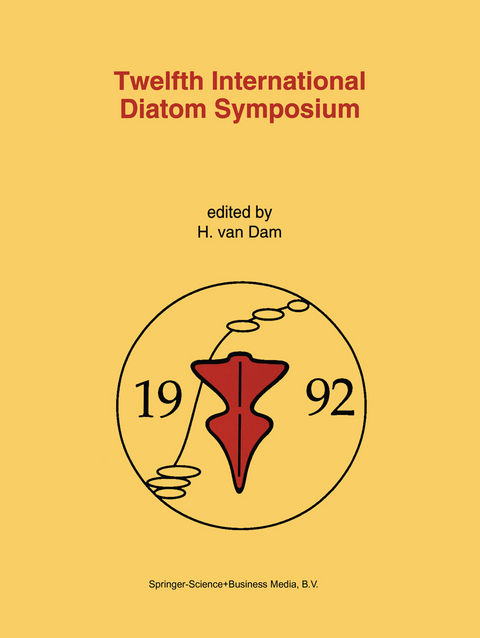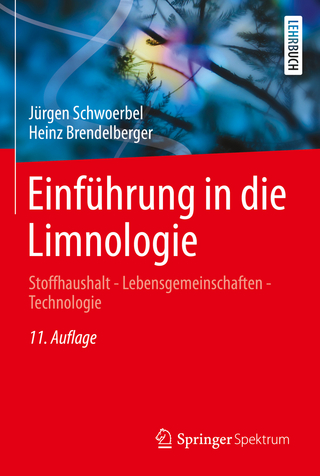
Twelfth International Diatom Symposium
Springer (Verlag)
978-90-481-4324-5 (ISBN)
The Twelfth International Diatom Symposium stressed how diatoms can be used to assess the human impact on natural waters, without neglecting other important fields of research.
As the frustules of many diatom species are relatively resistant to dissolution they are preserved in freshwater and marine sediments and provide a record of past environments on earth. In past decades they have been successfully used to reconstruct changes in water bodies evoked by changes in salinity, acidification and eutrophication. In the last few years diatom-inferred predictions of environmental variables have become much more quantitative.
In the most recent research reports the strong separation between palaeolimnological and neolimnological diatom research is fading, as palaeolimnologists are increasingly using modern calibration sets to infer past states of the environment. This quantitative approach is also very suitable for prediction of future changes in the biota of surface waters. Also ecological changes due to climatic modification have been investigated more thoroughly recently. A very important new research topic is the occurrence of toxic diatoms, particularly along the coasts of North America. These proceedings are intended to be a balanced view of such modern developments in diatom research. They should also be of interest to non-specialists in diatoms, who can use the results of diatom research as a tool in a more general taxonomic, ecological and geological context.
History of diatom research in The Netherlands and Flanders.- Patterns of sexual reproduction in diatoms.- Hustedt’s study of the diatom species Tetracyclus ellipticus: why history is not just a chronicle of events.- Freshwater gomphonemoid diatom phylogeny: preliminary results.- Morphological variability of the diatom Cyclotella atomus Hustedt var. atomus and C. atomus var gracilis var. nov..- Morphology and taxonomy of Cyclotella tasmanica spec. nov., a newly described diatom from Tasmanian lakes.- Morphology and ultrastructure of teratological forms of the diatoms Stephanodiscus niagarae and S. parvus (Bacillariophyceae) from Hamilton Harbour (Lake Ontario, Canada).- Morphological variation in populations of the diatom Asterionella ralfsii W. Smith from Nova Scotia, Canada.- Observations on Cymbella mexicana (Ehrenb.) Cleve var. mexicana (Bacillariophyceae) with special reference to the band structure.- Amphora margalefii Tomàs var. lacustris P. Sánchez var. nova, a new brackish water diatom.- Cymbellonitzschia diluviana Hustedt (B acillariophyceae): Habitat and auxosporulation.- Surirella sparsipunctata Hustedt and S. sparsipunctata var. laevis Hustedt (Bacillariophyceae), a light and electron microscopical study.- Eucampia Index as an indicator of the Late Pleistocene oscillations of the winter sea-ice extent at the ODP Leg 119 Site 745B at the Kerguelen Plateau.- Diatoms in surface sediments of the Indonesian Archipelago and their relation to hydrography.- Diatoms in recent Atlantic (20 ° S to 70 °N latitude) sediments: abundance patterns and what they mean.- Diatom-inferred productivity changes in the Eastern Equatorial Pacific: The Quaternary record of ODP Leg 111, Site 677.- Actinoptychus splendens (Shadbolt) Ralfs (Bacillariophyceae): a biostratigraphicmarker for the later part of the Holocene coastal deposits along the southern North Sea.- Evolution of the Pretoria Saltpan — a diatom record spanning a full glacial—interglacial cycle.- Diatoms and their preservation in the sediments of Lake Neuchâtel (Switzerland) as evidence of past hydrological changes.- Development of diatom-based salinity models for paleoclimatic research from lakes in British Columbia (Canada).- Toxic diatoms in western Washington waters (U.S. west coast).- Growth characteristics of the diatoms Pseudonitzschia pungens and P. fraudulenta exposed to ultraviolet radiation.- Comparison of two domoic acid-producing diatoms: a review.- Diatom bloom in the tidal freshwater zone of a turbid and shallow estuary, Rupert Bay (James Bay, Canada).- Diatoms in surface sediments of the Gotland Basin in the Baltic Sea.- Diatom assemblages in superficial sediments from the Gulf of Riga, eastern Baltic Sea.- A comparison of phytoplankton assemblages in the Chesapeake and Delaware estuaries (U.S.A.), with emphasis on diatoms.- Spatial and temporal variation in community composition and photosynthetic characteristics of phytoplankton in the upper Westerschelde estuary (Belgium, SW Netherlands).- Short-terns fluctuations in benthic diatom numbers on an intertidal sandflat in the Westerschelde estuary (Zeeland, The Netherlands).- Diatoms as a tool for reconstructing sedimentary environments in coastal wetlands; methodological aspects.- Reconstruction of sedimentary environments in Holocene coastal deposits of the southwest Netherlands; the Poortvliet boring, a case study of palaeoenvironmental diatom research.- Colonization processes of diatoms on artificial substrates in the River Danube near Budapest (Hungary).- Winter blooms of centric diatoms in the RiverDanube and in its side-arms near Budapest (Hungary).- Diatom communities in the Vanishing and Ornithologist Creek (King George Island, South Shetlands, Antarctica).- Diatom communities of acidic mountain streams in Poland.- The assessment of water quality in the Artois-Picardie water basin (France) by the use of diatom indices.- Perspectives for the use of diatom assemblages in the water management policy of Overijssel (The Netherlands).- The recent palaeolimnology of Lake Nicholls, Mount Field National Park, Tasmania.- The influence of catchment size on lake trophic status during the hemlock decline and recovery (4800 to 3500 BP) in southern Ontario lakes.- Diatom assemblages and their relationship to environmental variables in lakes from the boreal forest-tundra ecotone near Yellowknife, Northwest Territories, Canada.- Changes in diatom assemblages in the profundal sediments of two large oligohumic lakes in eastern Finland.- Eutrophication and recovery of Lake Vesijärvi (south Finland): Diatom frustules in varved sediments over a 30-year period.- The use of diatoms in monitoring the development of created wetlands at a sandmining site in Western Australia.- Diatoms on herbarium macrophytes as indicators for water quality.- Freshwater diatom ecology: developing an experimental approach as an aid to interpreting field data.- Effects of nutrient (N, P, C) enrichment upon the littoral diatom community of an oligotrophic high-mountain lake.- Diatom ecology in the phyllosphere of the common duckweed (Lemna minor L.).- Diatom preservation: experiments and observations on dissolution and breakage in modern and fossil material.- Weighted averaging partial least squares regression (WA-PLS): an improved method for reconstructing environmental variables from speciesassemblages.- A taxonomic database and linked iconograph for diatoms.- ‘Omnidia’: software for taxonomy, calculation of diatom indices and inventories management.- Generic names in current use in the diatoms: report on a workshop.- ‘Linnaeus’ and beyond: workshop report on multimedia tools for the identification and database storage of biodiversity.- Toxic diatoms: report on a workshop.
| Reihe/Serie | Developments in Hydrobiology ; 90 |
|---|---|
| Zusatzinfo | XII, 540 p. |
| Verlagsort | Dordrecht |
| Sprache | englisch |
| Maße | 210 x 279 mm |
| Themenwelt | Naturwissenschaften ► Biologie ► Limnologie / Meeresbiologie |
| Naturwissenschaften ► Biologie ► Mikrobiologie / Immunologie | |
| Naturwissenschaften ► Biologie ► Ökologie / Naturschutz | |
| Naturwissenschaften ► Geowissenschaften ► Geologie | |
| Naturwissenschaften ► Geowissenschaften ► Meteorologie / Klimatologie | |
| ISBN-10 | 90-481-4324-1 / 9048143241 |
| ISBN-13 | 978-90-481-4324-5 / 9789048143245 |
| Zustand | Neuware |
| Informationen gemäß Produktsicherheitsverordnung (GPSR) | |
| Haben Sie eine Frage zum Produkt? |
aus dem Bereich


